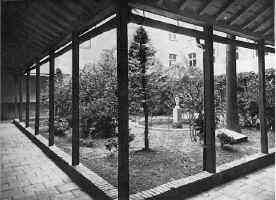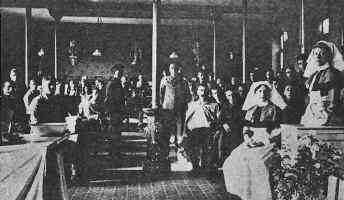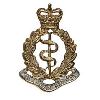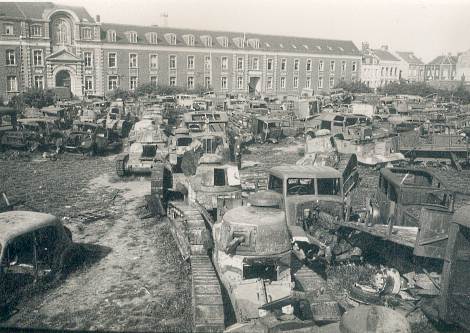|
> HOME < |
|||||||
|
SAINT-FRANCIS OF ASSISI COLLEGE (1854-1973) |
|||||||
 It
was 1854. In those days , the people living in Hazebrouck spoke
Flemish. Some different sects appeared in the region and the archbishop of Cambrai,
Monseigneur Régnier was very worried about such a decline of Catholicism.
But in 1851, in Morbecque, a village near Hazebrouck, the Monseigneur saw a
Belgian capuchin priest, called Isidore who was such a good preacher that
he asked him to come and live in Hazebrouck.So, a monastery was built for
the monks who moved to their new residence on the 20th of
November 1854.Their chapel was dedicated to saint Anthony of Padua.
The monastery was built in a field far from the town centre but next to the
railways inaugurated in 1848.In 1861, they were forced to leave France because they were regarded as an illegal congregation. The
monastery stayed empty for four years except for one French monk
who was allowed to stay. It
was 1854. In those days , the people living in Hazebrouck spoke
Flemish. Some different sects appeared in the region and the archbishop of Cambrai,
Monseigneur Régnier was very worried about such a decline of Catholicism.
But in 1851, in Morbecque, a village near Hazebrouck, the Monseigneur saw a
Belgian capuchin priest, called Isidore who was such a good preacher that
he asked him to come and live in Hazebrouck.So, a monastery was built for
the monks who moved to their new residence on the 20th of
November 1854.Their chapel was dedicated to saint Anthony of Padua.
The monastery was built in a field far from the town centre but next to the
railways inaugurated in 1848.In 1861, they were forced to leave France because they were regarded as an illegal congregation. The
monastery stayed empty for four years except for one French monk
who was allowed to stay.
I n 1865, one of its three owners, Mr Dehaene, the principal of the Hazebrouck municipal college who had just been dismissed , decided to create a new college. It was called Saint Francis of Assisi and opened on the 9 th of October 1865. There were 15 teachers and 175 pupils. A very big college at that time.It became a religious seminary in 1873. From 1865 to 1973, there were 8 headmasters and about 5000 pupils who came to Saint-Francis’ and 1500 of them became priests. |
|||||||
 The
most famous of its pupils was certainly Jules Lemire, a French priest and social
reformer, who was born at Vieux-Berquin (Nord) on the 23rd of April 1853. The
most famous of its pupils was certainly Jules Lemire, a French priest and social
reformer, who was born at Vieux-Berquin (Nord) on the 23rd of April 1853. He was educated at the college of St Francis of Assisi where he subsequently taught philosophy and rhetoric. In 1897 he was elected deputy for Hazebrouck and was returned unopposed at the elections of 1898, 1902 and 1906. He organized a society called "La Ligue du coin de terre", the object of which was to secure, at the expense of the state, a piece of land for every French family desirous of possessing one. The abb Lemire sat in the chamber of deputies as a conservative republican and Christian Socialist. He protested in I893 against the action of the Dupuy cabinet in closing the Bourse du Travail, characterizing it as the expression of a policy of disdain of the workers. In December 1893 he was seriously injured by the bomb thrown by the anarchist Vaillant from the gallery of the chamber. He died in 1928. |
|||||||
|
|
|||||||
|
|
|||||||
|
The canteen was used as an hospital - click to enlarge |
This
college was occupied during the First world war by the British Army (n°12
ccs) and more than 1200 wounded soldiers stayed in the college. On the
24th of May 1915 there were more than one hundred corpses lying
on the playground. The daily diary of the british army is held at the Public Record Office, in Kew, London. (It is document WO95/498). |
||||||
|
|
|
||||||
|
the First world war
http://www.theotherside.co.uk/tm-heritage/background/first-war.htm#top |
|||||||
|
|
|||||||
Hazebrouck: |
|||||||
|
|
|||||||




 Saint-Jacques, an independent secondary school, is established in
a
Saint-Jacques, an independent secondary school, is established in
a